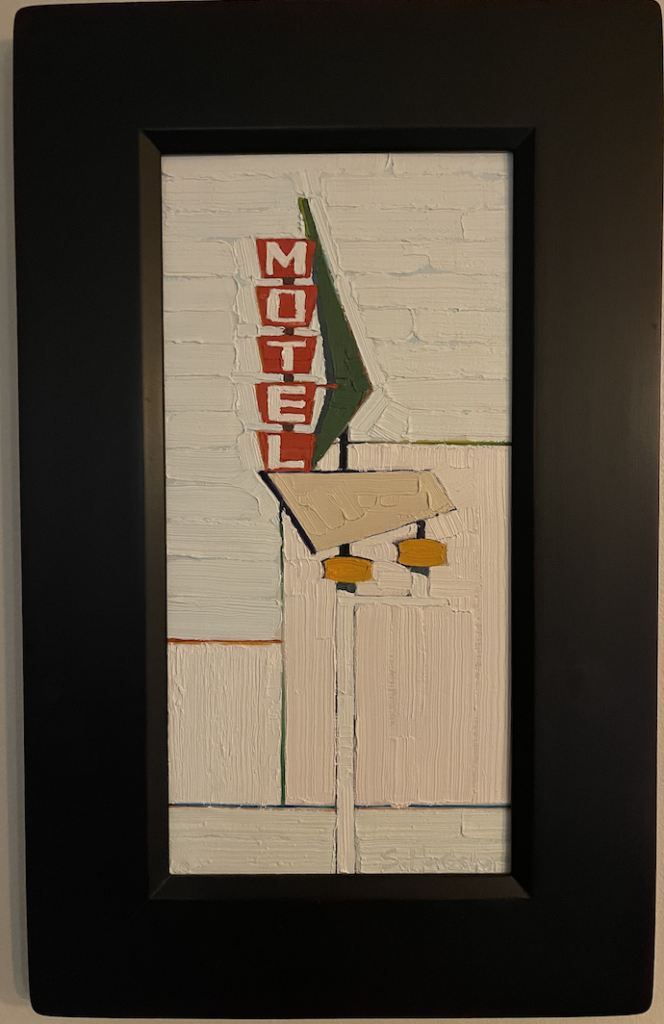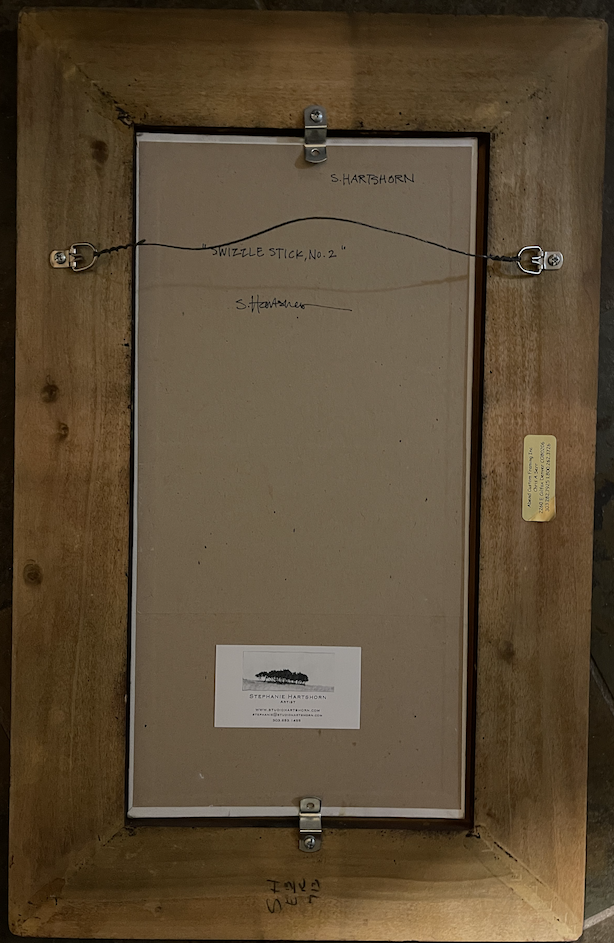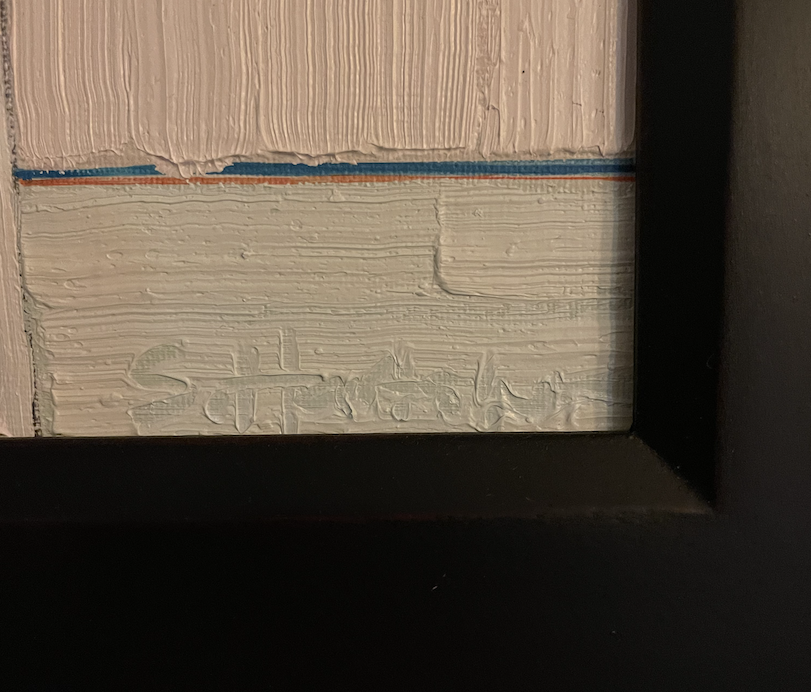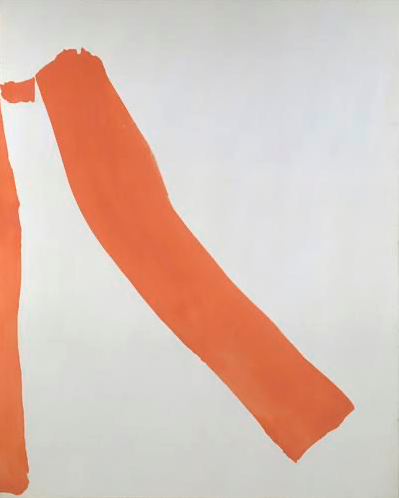Living in a Helen Frankenthaler painting
I recently downsized from a house of more than 4,000 sq. ft. into a cozy 1,600 sq. ft. place. I am, by nature, utilitarian, and a minimalist, so this move was in many ways a return to a sort of balance I had once possessed. The idea of contracting my life back into a smaller living space felt like, essentially, moving out of a frenetic Jackson Pollock drip painting into a strong and intentionally spare Helen Frankenthaler. Or so I thought.To my chagrin, moving house clearly and painfully demonstrated that I was no Frankenthaler. In fact, when it came to clutter, I had surpassed Pollock.
In my defense, the slow slide from utilitarian toward hoarder took place over the last 20 years and two kids. And, fine, I’ll admit that I may have a little first edition book and art addiction, which I will get to…but I also may have a problem throwing away, well, anything—notecards, photos, holiday decorations, memorabilia, threadbare clothes, shoes. So much for minimalism.
Swedish Death Cleaning
When I first heard the term “Swedish Death Cleaning,” I must admit I was morbidly intrigued. According to the articles I read, the idea is to get rid of as much stuff as you can, so your loved ones don’t feel the burden of having to decide whether that cheese grater meant something to you or not. And it turns out there are lots of other benefits, namely that living with less clutter quiets the mind, helps one destress and realize a sense of calm. Seriously, there are great article and studies about this—here’s one from Psychology Today, if you’re interested.
Sparking Joy versus Avoiding Reality
Downsizing has been an exercise in patience. I’ve never read Marie Kondo’s books or seen her cable tv show, but people have filled me in on her philosophy, which I always thought was a bit silly. Until now.
I found, as I packed to move, that some things felt heavy in an oppressive sort of way, as if they required more from me than they should. Was I, I wondered, keeping things out of obligation? And yet, even as my rational brain said to let go, I just couldn’t ditch a single book, pencil, or spatula. The job of pairing down to move became so ponderous that I finally gave up and threw everything into boxes for the movers to schlep to my new place, thinking I could deal with it later.
The afternoon the movers dropped off the last box, I remember watching the sun sink low in the sky, and warm afternoon light bathing stacks of boxes and books piles everywhere. Instead of the feeling a sense of renewal, I felt exhausted and overwhelmed. Nothing sparked joy.
Call the Girls
For some reason, in the weeks after the move, I kind of shut down each time I tried to unpack. I couldn’t make a decision. I hadn’t even hung a single painting from my beloved art collection. What was wrong with me? I was literally walking around boxes and stacks of books trying to find my electric toothbrush, a can opener, and dish towels.
Finally, I did what any rational woman would: I located the martini shaker and called the girls. They came without question and adhered to my one request: be honest. Boy, were they. Suddenly, seeing my things through their eyes, I was able to detach—not from my art collection, of course—but everything else was on the chopping block, and chop we did.
After they left, I held a yard sale and whatever didn’t sell was hauled off to Goodwill. At last I could pull my car into the garage.
OK, full disclosure: I can park in the garage if I carefully pull in between a tower of boxes on one side and an antique desk on the other. (Don’t judge. I’d like to see you do it.)
So, yeah, I need to do more death cleaning, but I am getting closer to a Frankenthaler every day and it does feel good.
A Cup of Righteous Indignation, Anyone?
Despite the fact that I am still in the process of cleaning out the closets and taking stuff to Goodwill, I actually went to an estate sale that promised art, antiques, and rare books–truly, the only thing better would have been puppies.
I wasn’t actually going to buy anything. Just looking, you know, for a friend. OK, maybe I’d get something, but only if I saw a great piece of art that had been totally underpriced.
I pulled up and parked by the private tennis court, and followed the signs down a shady footpath toward the back of a sprawling ranch home. Very promising. But as I turned the corner of the house, I nearly crashed into a row of tables piled high with random mismatched household items—crock pot, coffee mugs, cheese graters, French press, utensils, and assorted tchotchkes.
I’ve come to realize over the years that my brain doesn’t work well amid clutter. I have a hard time focusing, so much so that I often turn and exit this kind of chaos. But as I stood there, all deer-in-the-headlights, the strangest thing caught my eye. Leaning against a stack of dented pots was a small, framed photo of a young girl in her First Communion dress and veil, hands pressed together, just below her chin, eyes focused on some distant light shining from above.
Geez! Who would toss a personal family photo on a pile of household crap? Didn’t a single relative claim it? Or at least have the courtesy of pretending to understand that the dearly departed kept that picture all these years because it had some sentimental value?
Of course, on the heels of this bit of condescension was a sucker punch of reality:
Was I so sure my own family knew or even cared about the things I’d collected all these years?
Driving away from that estate sale—yes, I did manage to make my way through the house, and, no, I didn’t buy a thing—I thought that someone really should have done some death cleaning.
And then, sucker punch number two:
Who the hell was I to judge?
Wow, my BS detector was set on high alert that day.

What haunts me
The lonely First Communion photo still kind of makes me sad; it should have been claimed. And it scares me because I doubt my own friends and family would understand much less try to suss out the value of any of this stuff that still surrounds me.
What I’m doing about it
In 2009, I had compiled a concise listing along with photographs of my art collection, which I then had appraised. It’s recommended to have your collection appraised every three to five years. Whoops.
In my line of work, I have been asked to do many appraisals, so taking care of my own documentation shouldn’t be an issue, right? (It’s true: the cobbler’s children have no shoes.)
I’m guessing one or two of my readers need to do this, along with a little Swedish death cleaning. So, here we go.
Over the years, I’ve developed a system that I’m going to share this with you so you can make sure you’re taking care of business, too. I keep track of my records online, in an Airtable. If you’re not familiar with Airtable, you really need to check it out. It’s a free, open source site that has tables for just about anything you can think of. It’s basically Excel on speed. Here’s a link to my art collection layout: Rose’s Art Collection Base.

Here’s what you need to record
- Artwork title. Don’t make this up—check the back of 2-D work or the underside of a sculpture. If no title exists, call it “untitled” or “title unknown” and give it a small description such as “portrait of young girl in communion dress tossed on table at estate sale.”
- Size of the image and outer size of the frame, height by width. For sculpture, add depth. Note: art dimensions are always listed in this order–height by width; you confuse us when you reverse things.
- Medium–oil, pastel, watercolor, bronze, etc. And, list the specifics of the substrate, if you know it, such as “oil on linen,” or “c-print mounted on card.” If you’re not sure, call an artist; they will know immediately what you’ve got.
- Year the artwork was created. If you don’t know exactly, list the approximate date and toss the word “circa” after to denote that you’re pretty sure it was done close to this year.
- What you paid. If you have the invoice and are uploading things in a spreadsheet, consider taking a scan or photo of your sales materials, and adding them to the digital file.
- Where you got the artwork. This establishes a lovely trail that we in the biz thoroughly enjoy. It’s called “provenance.” Long after the artist has passed, the provenance really comes into play, establishing the importance of the work and, thereby, it’s value. If a work of art you own has been shown in a museum or major exhibition, make sure you keep record of that and leave the museum tag, if one was placed on the back of the work, exactly where it is. (As an aside if a museum wants to borrow something, for goodness sakes, say yes! This supports the artist and your collection.)
- Frame on painting or base of sculpture. Add details such as 18k gold leaf water gilded or walnut base with name plate.
- Glass or plexi, museum grade, UV, etc.
- Note any dings or mars to the frame or artwork surface, as well as discoloration or creases to works on paper.
- Note what dealers are selling the artists work. I like to add this for the family, so they know where to call if they decide to sell off things at some point. It’s much easier to work with dealers who are familiar with the artist and have a ready contact list of buyers. They will charge for the sales but in most cases it’s worth it.
Tips and Tricks for photographing art

You don’t need to take print worthy pictures for your records. In fact, I use my iPhone for recording my collection as well as when I’m working on an appraisal.
The main things you need photos of are the front and back of paintings, if sculptural, get pics from 3-4 angles, take a closeup of the signature, and if the frame is really special, get a couple closeups of corners or compo designs.
Here’s a favorite trick I’ve learned when taking pictures of paintings under glass: lay the work flat on the ground, close the blinds and shut off overhead lights, then shoot down. You may have to move your body a bit until you find the best spot with the least reflection–sometimes I stand on a chair–but the smart phone camera auto adjusts for low light.
Don’t forget to take a photo of the back of 2-D work, if there’s any writing or show and gallery stickers on the back. This helps established the provenance of the work.


Do You Need an Appraisal?
There are several reasons you might need or want to get an appraisal.
Replacement cost for insurance: the cost to replace a work of art if it is stolen or lost in a fire, for example. That cost is determined by looking at current market values, i.e. what it will cost to replace the work. It’s pretty straight forward. Your insurance company does cover things like your home and clothes and tv, but they generally don’t cover art unless you supply them with a clear list and an appraisal. Check with your agent.
Donation of art: most institutions won’t accept art donations without an appraisal, and the person making the donation will need the appraisal in order to get a tax write-off.
Division of property: lawyers may request these to accurately divvy up property in a divorce, for example.
Estate appraisal: required by the IRS, these appraisals must done by a certified appraiser.
What to look for in an appraiser and what to expect:
- In many states, appraisers of art do not have to be licensed to do replacement valuations for insurance. They do, however, need to have substantial market knowledge, which is why you can often find gallerists and curators doing these kinds of appraisals. Check the laws of your state before selecting an appraiser for insurance valuations.
- Look for an appraiser with specific knowledge in the work you need valued. Personally, I stick to a narrow scope, focusing on art I am already familiar with. I do not, for example, appraise rugs or jewelry; I refer that out to someone who works with those things.
- The appraiser should not sell art for the client. This is a conflict of interest. If you want someone to sell your collection, you want an art adviser not an appraiser. The adviser should tell you the current market values, where they got those values, and give you an idea of what they think they can net for you. Sign a contract with the adviser before embarking on the sale of any art.
- Appraisers will give you a letter of intent that explains how they work and how they charge–usually an hourly rate.
- There are national and international associations that list appraisers. You can also ask a gallery you frequently work with or your insurance agent to refer you to an appraiser they use.
Feel free to reach out if you have any questions: Contact Rose.



